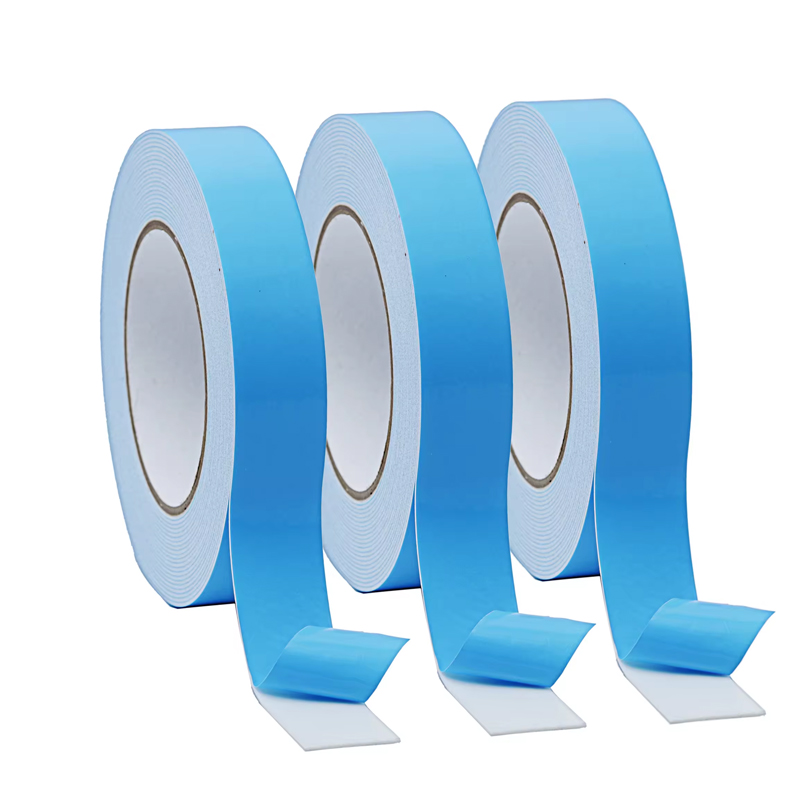Double Coated Polyethylene (PE) Foam Tape is a versatile adhesive solution widely used across various industries. This guide delves into its features, applications, and provides insights to assist buyers in making informed decisions.

Features of Double Coated Polyethylene Foam Tape
1. Construction and Composition
Double Coated PE Foam Tape consists of a closed-cell polyethylene foam core coated on both sides with pressure-sensitive adhesive. The foam core offers cushioning and conformability, while the adhesives—typically rubber or acrylic—provide strong bonding capabilities.
2. Adhesive Types
Rubber Adhesive: Known for its high initial tack, rubber adhesive bonds well to low surface energy substrates like polyethylene and polypropylene.
Acrylic Adhesive: Offers excellent long-term holding power and resistance to environmental factors, making it suitable for outdoor applications.
3. Thickness and Density
Common thicknesses range from 0.8 mm to 1.6 mm, with foam densities between 65 kg/m³ and 95 kg/m³. These variations allow for flexibility in applications requiring different levels of cushioning and adhesion strength.
4. Temperature Resistance
Double Coated PE Foam Tapes typically operate effectively within a temperature range of -18°C to 82°C, accommodating various environmental conditions.
Applications of Double Coated Polyethylene Foam Tape
1. Automotive Industry
Used for mounting emblems, trim, and other components, the tape's conformability ensures a secure bond on irregular surfaces.
2. Construction and Building
Ideal for attaching signs, panels, and decorative elements, providing a clean finish without the need for mechanical fasteners.
3. Electronics
Employed in assembling devices, securing components, and providing vibration damping due to its cushioning properties.
4. Retail Displays
Facilitates the mounting of point-of-purchase displays, nameplates, and signage, offering a strong bond with easy application.
5. General Industrial Use
Applicable in various manufacturing processes for bonding, sealing, and gasketing purposes.
Selection Tips for Buyers
1. Assess Surface Characteristics
Determine the surface energy of the materials to be bonded. For low surface energy substrates, rubber adhesives are preferable, while acrylic adhesives suit high surface energy materials.
2. Consider Environmental Conditions
For applications exposed to outdoor elements or temperature fluctuations, opt for tapes with acrylic adhesives due to their superior resistance to environmental factors.
3. Evaluate Load Requirements
Assess the weight and stress the bond will endure. Thicker tapes with higher foam density provide better load-bearing capacity.
4. Application Method
Ensure proper surface preparation by cleaning and drying the surfaces. Apply firm pressure during installation to achieve optimal adhesion.
5. Review Technical Specifications
Consult the manufacturer's datasheets for detailed information on adhesive strength, temperature resistance, and compatibility with specific materials.
Conclusion
Double Coated Polyethylene Foam Tape offers a reliable and efficient bonding solution across various industries. Understanding its features and applications enables buyers to select the appropriate tape for their specific needs, ensuring durability and performance in their projects.



